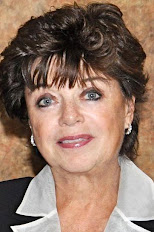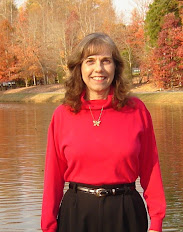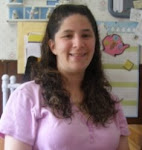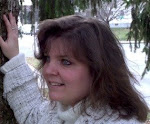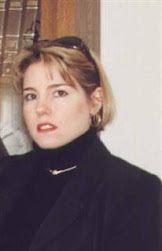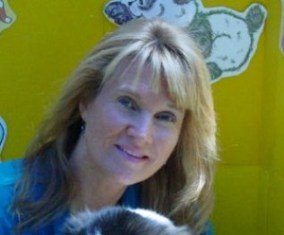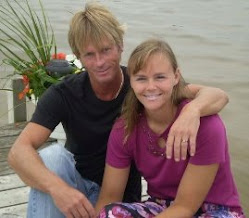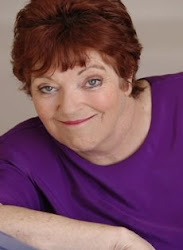Have you ever wondered how a
book cover is made? It is surprising how many different ways cover artists,
book designers and/or illustrators approach the task. I talked with a few
Guardian Angel Publishing illustrators to learn more about their process.
First, let’s introduce the
talented ladies who took time out of their busy schedules to talk with me. Melissa Ross, is the
author/illustrator of Today I Am A Penguin. K.C. Snider has illustrated
more than thirty books for Guardian Angel Publishing and Jennifer Thomas
Houdeshell has already illustrated two picture books for Guardian Angel
Publishing.
Thank you, ladies, for chatting with me. I’ve worked
with K.C. Snider on my two chapbooks for tweens, The Weaver and The Wishing
Well: Another Weaver Tale. We collaborated over both covers and I was curious
if that was a standard experience or if that was simply how K.C. works. Can you
give us some specific experiences?
Melissa: As both writer and illustrator of Today I Am APenguin, I wanted the cover to introduce the main two characters, Kaleigh
and Ian. I also wanted to convey the joy these two characters experience
as penguins. I chose an image where Kaleigh and Ian are enjoying one of
the most fun pats of being a penguin-- sliding down an icy hill
Many people will buy a book just because there is something on the cover that
catches their eye. I chose vibrant icy blues and rich purples. This also
helped create a dreamlike quality, which I imagine Antarctica feels like--a
beautiful icy wonderland of whites, blues, purples and pinks.

K.C.: For The Town of Masquerade by Jack
Samuels, the publisher, author, and I collaborated on the nature of the story to come up with an
unusual book cover design to match the unusual storyline. Even the colors used in the background
and on the masks are at opposite sides of the color wheel. I collaborate extensively with my
publisher because she has a lot of great ideas and I can elaborate from
them. The author sent in
his ideas of the important parts of the story he wanted to see incorporated on
the cover. When I have the
ideas, I run them past my publisher first so she can critique them with how
well they match the story in one quick look. In this case, she came up with the
idea of using the thespian masks of tragedy and comedy and having children
climbing them. I had an
idea of the color scheme and of how the children would be climbing, how many
children would look good, how to balance the illustration as a whole, and what
kind of story it would tell in one glance. If
you notice you can only see one child’s face, the one at the top of the masks
is wearing a mask. The
cover must draw in the public’s eye and it must be a reflection of the real
story within the book.

Jennifer: I'm honored to be
the illustrator of the touching, sensitive story, Ebeneezer’sCousin, by author Kristen K. Zajac, about a military family. This was the
first book I illustrated for Guardian Angel Publishing, so I was delighted
to find I'd be given total artistic freedom to create the cover in any
manner I chose. Of course I carefully based it on the text so it provided
enticing clues to the story's plot. I wanted to focus on the endearing face
of "Maria," the little girl who is the main
character, as she held her much loved stuffed animal pal, the monkey,
Ebeneezer. I used the circular bands of color to heighten that focal point, and
I put the U.S. flag in Ebeneezer's hand to reveal that it's
a patriotic story.
The author, Kristen, didn't see the cover until I had
completely finished it, but she had seen all of the other completed
illustrations by then and was most enthusiastic about them. I created the cover
last. She was delighted with it as were the child I had
chosen as my model and her parents. Just remembering their joyful
reactions and that of our fine publisher, Lynda Burch, still makes me smile.
That is a soul satisfying experience for an illustrator!
***

Thank
you ladies. Let me share a little background on my book covers. On my first book, The Weaver, my publisher knew I
wanted a house as the focal point and that I wanted it to have an old world,
village feel. When K.C. was visiting St Louis for a big author/illustrator
event, she and our publisher, Lynda, drove around town taking pictures of
houses. Lynda had first hand knowledge of a house that she felt would portray
my ‘village in the mountains’ feel. K.C. brought the pictures back and I fell
in love with the house. In order for K.C. to create the character, Unwanted, I
read the passage that described him.

I was more prepared for my second book cover,
The Wishing Well: Another Weaver Tale. There is a house in my hometown that
looks like it belongs in a quiet hamlet in the Alp. So I knocked on the door
and asked, “Could your house model for my next book cover?” The homeowner readily
agreed and even provided some digital pictures from a more bloom-filled season
that I immediately forwarded to K.C.
I was thrilled with the collaboration and the
amount of input I had on my covers and, of course, I’m in awe of K.C.’s talent.
Is developing the cover always such a team event? How do you decide the
elements, the colors, or even the culture? Do other authors give you pictures?
Do you have to do research?
K.C.: Some covers
require specific ethnicity, expression, colors, and personality to match the
characters in the book. In
the case of Masquerade,
most of the children are from family photos of the children in my family and my
publisher’s family. A
couple of children are based on generic pictures from magazine ads, etc.
There is always research to be done. How much is needed depends on the
story. Historical books
require the most research to be sure everything is accurately depicted. In Masquerade, the town is
based on pictures from playgrounds, and pictures of Grant’s Farm in St. Louis,
Missouri, that my publisher provided. As an artist, I can easily come up
with ideas; the difficult part is finding what will fit my ideas from real
life. For example, there is
no description of any of the masks in this story nor was there a requirement to
put masks on the trees, clocks, fire hydrants, etc. I even put my little dachshund, Jack,
in one of the pictures wearing a mask. No
one told me how to dress the characters or who to show as adults in the town
and what they do. Each
illustration depicts a part of the story and a different piece of the town
without being told, “I want a little boy standing just so… wearing such and
such… in these colors…and crying.’”
Jennifer: I
always find models to use for the human characters in the books I illustrate.
Then I gather all of them together in one place and take photos of them acting
out the various scenes in the text. I take close ups of the various
expressions on their faces and then start sketching the people, composing the
scenes and creating the appropriate settings. Then I do the final, detailed
drawings using the photos for reference and begin the painting process.
I did have to do a lot of
research on military uniforms and insignias, various foreign locations, medical
equipment and even capuchin monkeys for the illustrations themselves but
not for the cover. I even went to a primate sanctuary to sketch capuchins. I
created Ebeneezer after seeing a cute stuffed animal in a store window.
The author wanted the characters in this story
to be Hispanic, so I chose the models accordingly. The little girl spoke only
Spanish, and I only English, but with plenty of smiles and the help of my
wonderful bilingual friend who was playing her mom, we did just fine. The
child knew her well, but she had just met the man I chose to play the role of
the father on the actual day of the photo shoot, so at first she was shy. Soon,
however she was laughing and talking. They were all good actors to be able
to portray a close family so convincingly. They all loved the book when it came
out and were proud to be a part of it.
Melissa: Because my story is
an educational one, it was very important to me to illustrate the anatomy of
the penguins and other marine life in the story as accurately as possible while
still maintaining their people-like qualities.
I used many books with pictures of penguins as
well as photos from the internet as models to work from. I would have
preferred real penguins to study, but the trip to Antarctica was a little too
pricey, not to mention way to cold for a Texas gal.
***
There is so much work involved, isn’t there? It isn’t a
matter of sitting in front of a canvas and painting any ole picture.
It was K.C.’s idea to add the milk bottle on the cover of
The Weaver, which was a perfect addition because of how he meets the main
character, Mary. Were there elements on the cover that surprised your author or
did they have input on all of it?
Melissa: Being the author as well, I was blessed to have freedom
to create a cover of my choosing. I wanted it fun, colorful, simple and
eye catching. Hopefully that was accomplished.
K.C.: The final
rendering was a good collaboration, more with my publisher than with the
author, so it was a surprise to Jack (the author, not my dog). He was delighted with it. My
publisher saw it as it was coming together, so if she was surprised, it was
with how well the colors worked together.
Thank you ladies for giving us a look inside the process
of creating a book cover. Our readers can learn more about your work by
visiting your websites.
Melissa Ross: http://www.melissa-ross.com/
K.C. Snider: http://www.kcsniderart.com/
Jennifer Houdeshell: www.zhibit.org/jenniferhoudeshellartist
 Has your child dreamed of meeting Tooth Fairy, Santa,
Sandman, or Easter Bunny? Ava wants to invite them to tea, but how? The answer
lies with one special character who knows them ALL! In the style of classic
fairy tales, I wrote "Ava's Secret Tea Party." Enjoy
the tale, look for hidden teacups and chocolate chip cookies in the sweet
illustrations by Bella Sinclair, and have fun making the recipes and crafts
included in the book!
Has your child dreamed of meeting Tooth Fairy, Santa,
Sandman, or Easter Bunny? Ava wants to invite them to tea, but how? The answer
lies with one special character who knows them ALL! In the style of classic
fairy tales, I wrote "Ava's Secret Tea Party." Enjoy
the tale, look for hidden teacups and chocolate chip cookies in the sweet
illustrations by Bella Sinclair, and have fun making the recipes and crafts
included in the book!  I’m a children's picture book author and inspirational
writer with hundreds of articles and devotionals published – so far! All of my
books for kids feature short, playful rhymes and humorous
illustrations by several different and oh-so-talented illustrators. I’m the
founder of Greater Harvest Workshops and Middletown Area Christian Writers, and
a Bible teacher, conference speaker, singer, and voiceover artist. I live in
the Cincinnati area with two dogs, two birds, and one husband. I have two grown
children who inspire me every day.
I’m a children's picture book author and inspirational
writer with hundreds of articles and devotionals published – so far! All of my
books for kids feature short, playful rhymes and humorous
illustrations by several different and oh-so-talented illustrators. I’m the
founder of Greater Harvest Workshops and Middletown Area Christian Writers, and
a Bible teacher, conference speaker, singer, and voiceover artist. I live in
the Cincinnati area with two dogs, two birds, and one husband. I have two grown
children who inspire me every day. 




+(280x420).jpg)







































